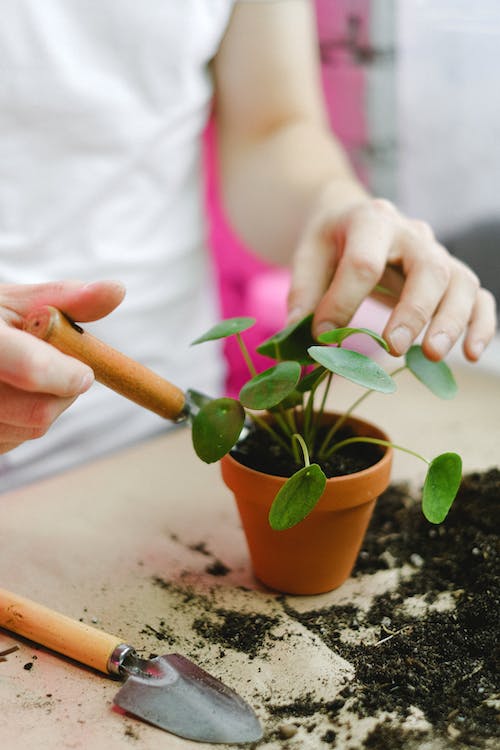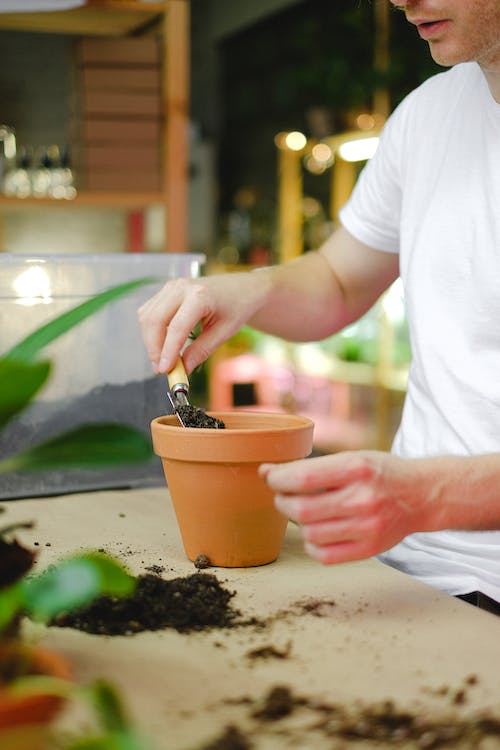
Autumn is upon us, and with cooler weather right around the corner it’s time to start thinking about how we’ll prepare our plants and gardens for the winter to come. We’ve discussed gardening in cooler weather before in this blog, but we’d like to revisit one aspect of it we didn’t go into depth on: transplanting plants from garden beds into containers. Moving plants form the ground to containers can make it easier to give them shelter in a greenhouse or cold frame, or allow us to bring them inside for the winter. Transplanting fully grown plants is a bit more complicated than transplanting seedlings, but with a little know-how and some attention to detail it’s something most of us can do. So, in grand Gardzen style, let’s dig in!
When to Transplant Your Plants
As with seedlings, the right conditions and timing increase your chances of a successful transplant from ground to container. In general there are two times of the year that give plants the best odds of surviving and thriving after a transplant: early in the year when the plant is still dormant or just waking up and active growth hasn’t begun yet, and later in the growing season when the plant is starting to slow down and go dormant for winter. Can you transplant at other times of the year? Yes, but it gets a little trickier. You’ll want to go slow, be especially gentle with the plant and its roots, and give it some shade and extra water to recover afterward.
How to Transplant Your Plants
So, now that we know when to transplant our plants, how do we go about it? Moving plants from the ground or a bed to a container requires a bit of patience and preparation. The first step involves watering, specifically giving the plant to be transplanted a good deep watering for a few days in a row before transplanting. This loosens the soil, making transplanting easier, and helps the plant soak up water and nutrients to mitigate the shock of transplanting.
The next step is to pick the right time of day to transplant. As with watering, pruning, and many other aspects of plant care, transplanting is generally best done early in the morning or late in the afternoon. At these times, temperatures are a bit cooler and the sun is less intense, which in turn puts less stress on the plant—and, for that matter, the gardener!

Now it’s time to transplant. You’ll need some basic tools—a garden trowel or small shovel, a container large enough for your plant, good container mix/potting soil, and a bit of patience. While you can use any container you like as long as it’s large enough, when possible we recommend erring on the side of caution and using a larger container with more soil just in case. Start by watering the plant one last time, to loosen the soil and help cushion its shock response. Fill your container about 1/3 full with soil, and water this soil so that it’s ready for your plant. Then, going back to the plant, gently dig around the root structure—you want to disturb the roots as little as possible; cutting or breaking them too much can kill your plant! Go slowly, work around the perimeter of the plant, and gently separate the root ball from the surrounding soil. Once you’ve done that, lift the plant gently by the root ball, not the stem, and move it to the container. Place the plant gently in the container, fill the remaining space around the root ball with soil—remember, soil settles so you may need to add more later. Water the plant in its new home till the soil is moist but not soaked, and give it time to rest and recover.
If possible, let the plant rest overnight in the container before moving it. A bit of shade can help the plant recover, so a row cover or other sun blocker can help keep the plant cool and let it absorb water and deal with the stress of the transplant. Keep the soil moist, but not soaked, and make sure that the soil is tamped down gently but not too firm or the roots will struggle to grown.

Transplanting for Year-Round Gardening
Transplanting from the ground to a container is a great way to preserve your plants as the weather changes. Once inside, your plant will need light, water, and nutrition just as it would outdoors, so don’t neglect that care! We hope that this approach to transplanting helps you save plants over the winter and get a head start on spring. If you have any tips for transplanting or caring for plants indoors, please let us know! Gardzen is all about community and we love hearing from you! :)

Leave a comment